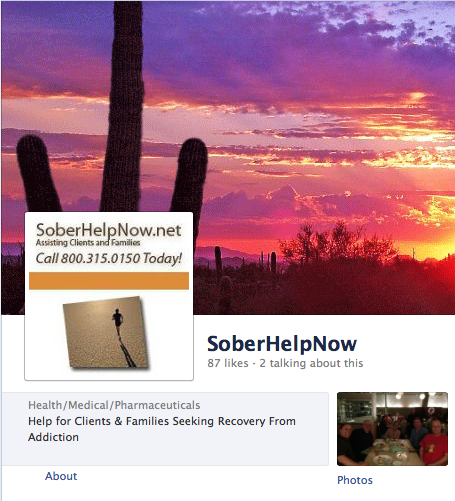Drug Treatment Outcomes that are reliable are hard to come by. They are often “squishy,” meaning that statistics can be grey, weak and easily manipulated. However, it is our experience that the following tenets maximize outcomes and therefore we only recommend treatment centers that model their programs in this way:
- Longer Length of Drug Treatment course with high accountability produce overall better drug treatment outcomes. The center should provide step-down levels of care over time, strong aftercare services, and abundant alumni involvement. For example, the Kentucky Physicians Health Program (treatment for impaired doctors, dentists and nurses) has approximately an 89% recovery rate. The program begins with inpatient treatment, steps down to Partial Hospitalization Program (PHP – “Day Treatment”), then Intensive Outpatient DrugTreatment (IOP), followed by Aftercare Program (weekly groups, accountability to 12-step participation and step work, frequent drug/alcohol testing). This process goes on for FIVE years, and is one good example that longer involvement produces better drug treatment outcomes.
- High Structure and Accountability practices instilled in the treatment course from beginning to end produce higher success of drug treatment outcomes. The center should have a lot of rules, based on evidence and empirical practices. Addicts and alcoholics are by nature “do it my way” individuals, only for them this concept is taken to extremes, and they often believe that life’s rules don’t apply to them, and they lack appropriate social boundaries. Unlearning this fallacy through healthy life practices is long process, and it begins with a treatment center that doesn’t allow the client to be manipulative through rationalizing and justifying why this or that doesn’t apply to them. A good drug treatment center that holds them accountable to intense rules will make the client uncomfortable, and this discomfort can be a precursor-cursor to surrender to “life on life’s terms” and pave the way for them to practice living life differently. This equates to the touchstone of recovery: emotional pain motivates spiritual growth. For example, I was once employed by a great long-term program in Texas called Burning Tree, and at last check had about a 73% recovery rate of those who finished all phases of it’s program, which lasted about two years. Their drug treatment outcomes were firmly rooted in the factor of time in residential treatment (8-13 months), a transition program that required employment, living in a sober house, two weekly aftercare meetings for a year after treatment, weekly recovery coaching, random testing, documented weekly activities, daily attendance at 12-step meetings, and regular visits to the treatment center to interface with inpatient clients (service). The treatment portion was very high structured and non-permissive. To be successful, you had to give up everything you thought you knew about how to stay sober. It works, the numbers speak for themselves, their drug treatment outcomes are the highest in industry.
- Minimal Medications used in the course of treatment produce better drug treatment outcomes. We live in a “there’s a pill for that” society. In the field of addiction treatment, there has been an onslaught of medications designed to reduce the “cravings” for AODs, such as Suboxone (Buprenorphine and Naloxone) and Subutex (Buprenorphine), Campral (Acamprosate), Vivitrol (Naltrexone), and Prometa (Flumazenil, Hydroxyzine, and Gabapentin), to name a few. As abstinence-based recovery supporters, we do not believe any of these drugs have any place in recovery outside of certain initial and minimal protocols. It is our belief that spiritual recovery is not only abundantly and ultimately sufficient, that these medications may inhibit recovery and leave the patient dependent. There are no convincing studies that prove any of these medications have any positive effect on recovery, and some are addictive themselves. Many of these “medication-assisted recovery” drugs are known contributors to relapse and therefore actually shrink drug treatment outcomes overall.
Please do not confuse what’s said here with the legitimate use of non-addictive medications for the treatment of mental health issues, such as depression, anxiety, psychosis, and other Axis I clinical disorders and Axis II personality disorders. Addiction patients often check into drug rehab with what looks like a multitude of these issues and in the case of endogenous (from within, hereditary, etc.) disorders, may need medication the rest of their lives. However, the problem is that many of these diagnoses have been made during or between active using and/or drinking episodes (with no mature recovery) and this makes it difficult to determine the veracity of the diagnosis until they are well into the post-acute withdrawal syndrome (PAWS) phase and have adopted a recovery program. A good treatment center watches this very closely and through a competent psychiatrist, well-versed in substance abuse treatment, treats the various issues with non-addictive medication accordingly, or rules them out altogether as exogenous (environmental) effect – the cause being the life of an addict or alcoholic. Under excellent dual-diagnosis care, favorable outcomes are increased.
FInding the right treatment center for any client is based on a number factors that should be assessed, and following recommendations by professionals increase the drug treatment outcomes experienced.

Speak Your Mind
You must be logged in to post a comment.